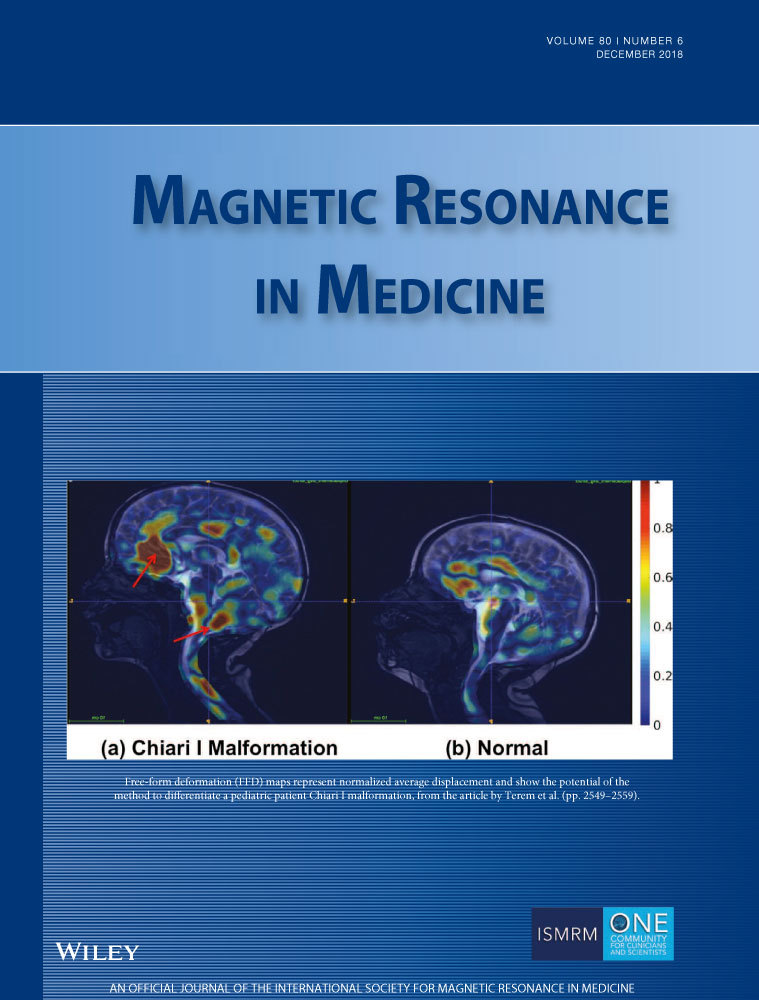Inter-method reproducibility of biexponential R2 MR relaxometry for estimation of liver iron concentration
Funding information: Supported by research grant from the National Institute of Diabetes and Digestive and Kidney Diseases (NIDDK), the National Institutes of Health (NIH) R01 DK100651 (s.b.r.)
Abstract
Purpose
To assess the reproducibility of biexponential R2-relaxometry MRI for estimation of liver iron concentration (LIC) between proprietary and nonproprietary analysis methods.
Methods
This single-center retrospective study, approved by investigational review board and compliant with the Health Insurance Portability and Accountability Act, included 40 liver MRI exams in 38 subjects with suspected or known iron overload. From spin-echo images of the liver, acquired at 5 different echo times (TE = 6–18 ms), biexponential R2 maps were calculated using 1 proprietary (FerriScan, Resonance Health Ltd., Claremont WA, Australia) and 3 nonproprietary (simulated annealing, nonlinear least squares, dictionary search) analysis methods. Each subject's average liver R2 value was converted to LIC using a previously validated calibration curve. Inter-method reproducibility for liver R2 and LIC were assessed for linearity using linear regression analysis and absolute agreement using intraclass correlation and Bland-Altman analysis. For point estimates, 95% confidence intervals were calculated; P values < 0.05 were considered statistically significant.
Results
Linearity between the proprietary and nonproprietary methods was excellent across the observed range for R2 (20–312 s−1) and LIC (0.4–52.2 mg/g), with all coefficients of determination (R2) ≥ 0.95. No statistically significant bias was found (slope estimates ∼ 1; intercept estimates ∼ 0; P values > 0.05). Agreement between the 4 methods was excellent for both liver R2 and LIC (intraclass correlations ≥ 0.97). Bland-Altman 95% limits of agreement in % difference between the proprietary and nonproprietary methods were ≤ 9% and ≤ 16% for R2 and LIC, respectively.
Conclusion
Biexponential R2-relaxometry MRI for LIC estimation is reproducible between proprietary and nonproprietary analysis methods.
CONFLICT OF INTEREST
Ivan Pedrosa has institutional research agreement with Philips Healthcare. Diego Hernando is the Co-founder of Calimetrix LLC. Scott Reeder: is a shareholder of Elucent Medical, is a consultant to Parexel International, is a co-founder of Calimetrix LLC, has ownership of Bracco stocks, and receives research support from GE Healthcare.




